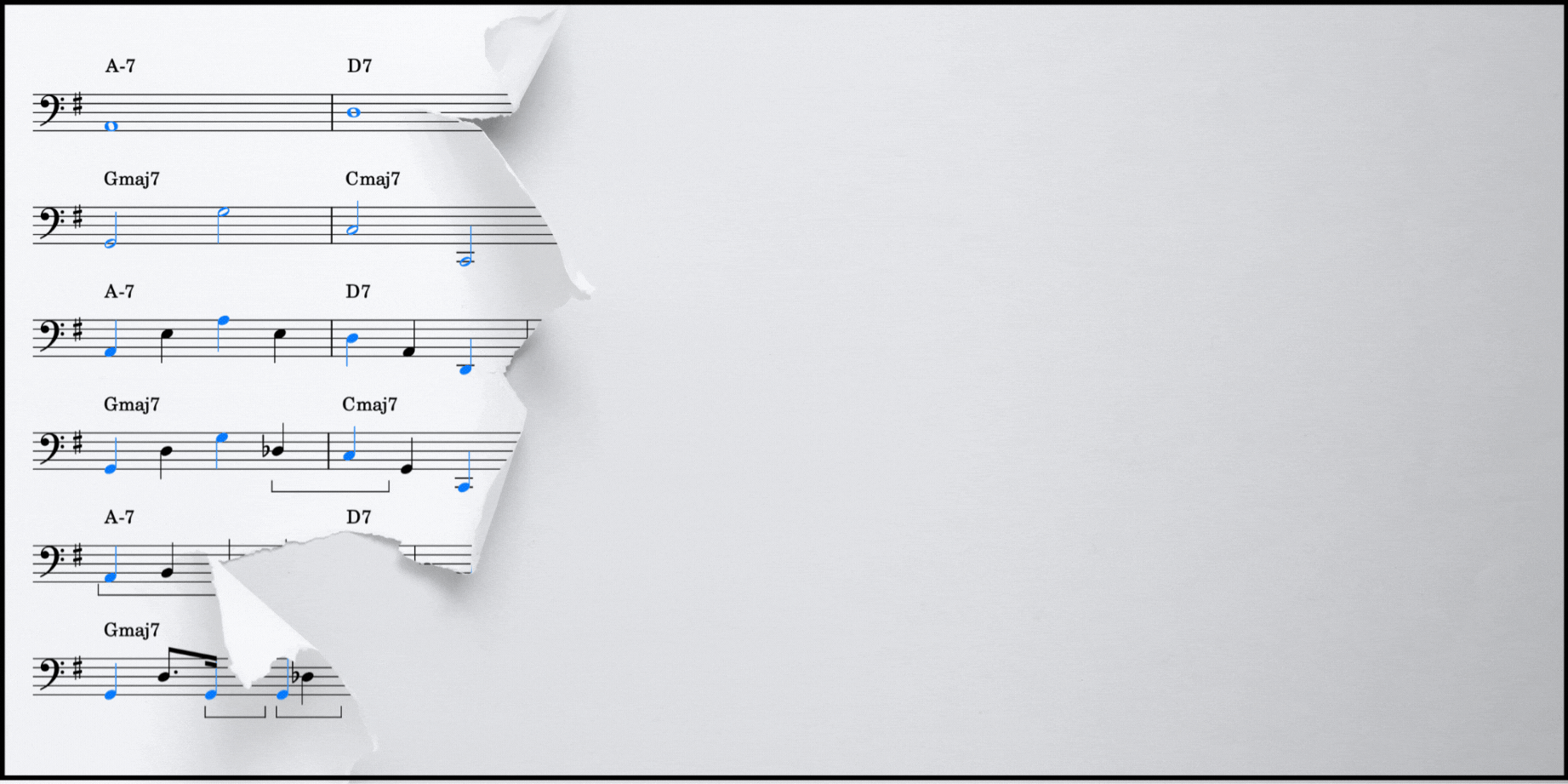The 6 Levels Of Jazz Basslines
This is the method that I’ve created to practice basslines on the piano (also known as walking bass). I’ll walk through six levels of basslines, applied to the first four measures of Autumn Leaves.
First things first, let’s look at where is the best place to play bass notes. We don’t want to be too high on the keyboard, or too low. The bassline zone below is the sweet spot.
Now that we know where to play with the left hand, let’s walk through what to play! The root note for each chord is colored blue so you can easily reference it.
Level 1
For Level 1, we just play the tonic (root/home note) for each chord, once per measure. So for an A chord, we play A, if we have a D chord, we play D, etc. If we’re playing through a song that has more than one chord in one measure, we’ll have to play more than one bass note in that measure.
Level 2
For Level 2, we’re going to double up the bass note, but one octave higher or lower. So instead of a whole note A for the whole measure, we’ll play a half note A, then another half note A, above or below the first one.
Level 3
For Level 3, we’re going to play a bass note on every beat. In between our root notes, let’s add the dominant (V/5) note. D goes in between the A’s, A goes in between the D’s, D goes in between the G’s, etc.
Level 4
For Level 4, we’re going to adjust the last bass note in each measure from the dominant, to a chromatic step away from the root note in the next measure. We can either step up to the root from below (e.g. C# to D) or from above (e.g. Eb to D)
Level 5
For Level 5, we’re really getting jazzy. We’ll use what I call a chromatic lead-up to get from one chord to the next. The steps are: whole step, half step, half step, and half step.
While this specific method works perfectly when your chords are a fourth away like in Autumn Leaves (A-7 to D7 is a fourth, D7 to Gmaj7 is a fourth, Gmaj7 to Cmaj7 is a fourth) you can also use it over any chord progression.
In these cases you’ll simply use [half step, half step, and half step] to arrive at whatever your next root note is. So for instance, if I’m going from A-7 to F#m7, my four bass notes for that measure will be A-D#-E-F-(to F# in the next measure).
Level 6
For Level 6, we’ll start adding “hard swing” on certain notes. Regular swing has a swing ratio of 60%, hard swing will have a higher swing ratio, 70%, 75% or even higher.
To learn more about swing ratios and more elements of these 6 levels of basslines, check out my Jazz Piano Improvisation Course which goes much more in depth on these subjects.
Jazz Piano Improvisation Course
Good luck!
Timothy








